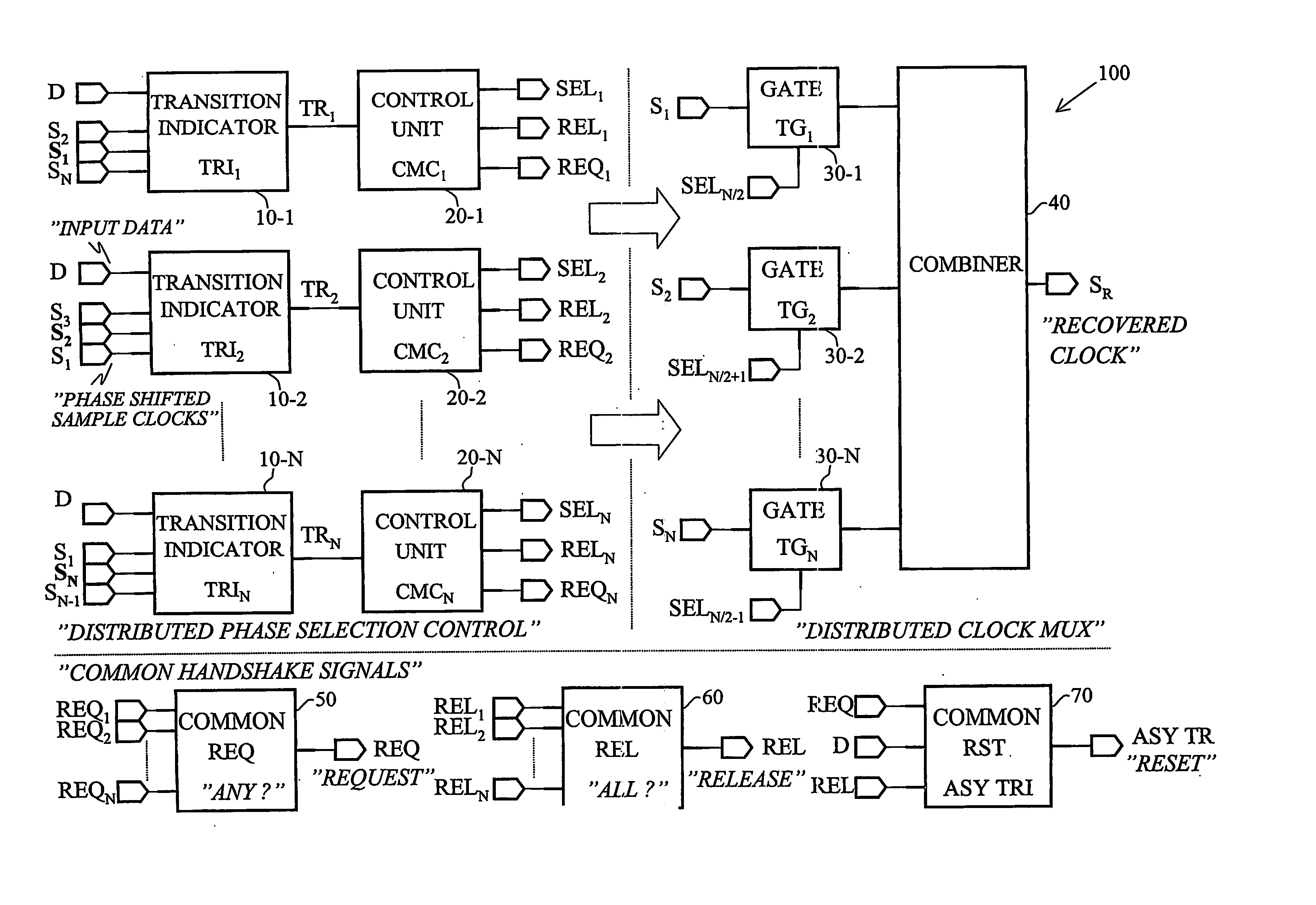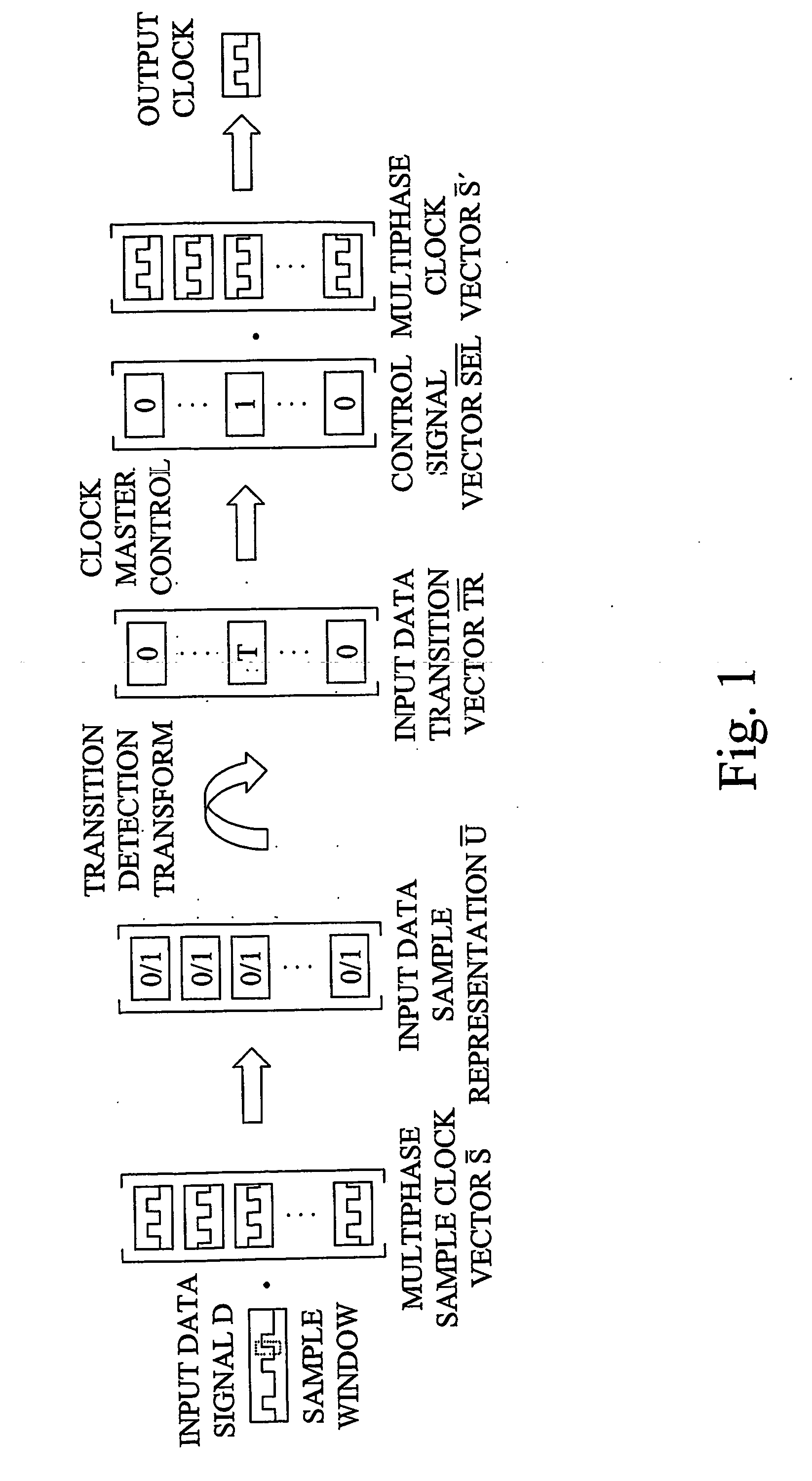Multiphase clock recovery
a multi-phase clock and recovery technology, applied in the field of communication systems and digital clock recovery, can solve the problems of clock recovery mechanism, imposing unnecessary restrictions on input data variation, and difficult task of aligning a sample clock to the incoming data, so as to reduce the sensitivity to abnormal input data conditions and limit the impact of perturbations
- Summary
- Abstract
- Description
- Claims
- Application Information
AI Technical Summary
Benefits of technology
Problems solved by technology
Method used
Image
Examples
Embodiment Construction
[0084] Throughout the drawings, the same reference characters will be used for corresponding or similar elements.
[0085] A fundamental scope for a clock recovery mechanism is to extract timing information from an incoming data stream without any explicit knowledge of the source clock, hence the label embedded clock is often used stating that no explicit clock accompanies the input data.
[0086] The invention represents a parallel and distributed approach to clock recovery. The clock recovery mechanism proposed by the invention operates based on multiple mutually phase shifted sample clock signals defining a set of orthogonal clock phases. Using the mathematical concepts of vectors and orthogonal systems in linear spaces, a vector-based notation is introduced to fully disclose the parallelism in the clock recovery algorithm. With reference to FIG. 1, the mutually phase shifted clock signals, forming a multiphase sample clock vector ( S), are employed for sampling an input data signal ...
PUM
 Login to View More
Login to View More Abstract
Description
Claims
Application Information
 Login to View More
Login to View More - R&D
- Intellectual Property
- Life Sciences
- Materials
- Tech Scout
- Unparalleled Data Quality
- Higher Quality Content
- 60% Fewer Hallucinations
Browse by: Latest US Patents, China's latest patents, Technical Efficacy Thesaurus, Application Domain, Technology Topic, Popular Technical Reports.
© 2025 PatSnap. All rights reserved.Legal|Privacy policy|Modern Slavery Act Transparency Statement|Sitemap|About US| Contact US: help@patsnap.com



